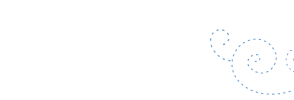
To find out how to build your BioLitter toilet, click here, or download the pdf schematic. [Drawings adapted by Olivier Vienne, from Écaussine in Belgium]
The text within this page was first published in French on www.eautarcie.com: in 2003
The original text has been adapted and translated in English by André Leguerrier and was first posted on www.eautarcie.org: 2009-06-15
Last update: 2017-08-16


The BLT Instruction Manual
It's Decided: We Will Use a BLT!
After having read the dry toilet pages of this website, many have understood the importance of the approach taken herein and have decided to install a BLT in their home. The key to success starts with a family consensus on the principle. In case of disagreement or hesitation, we always counsel visiting a family that uses and correctly maintains a BLT. An actual tryout of this toilet is worth much more than the most convincing of speeches.
Even for those who are convinced, it is wiser to test it out at home first with a temporary set-up before going out to purchase the definitive BLT. For that, you can use a common plastic bucket (sold for a few Euros/Dollars in specialty stores) or an enamelled metal bucket![]() that you can purchase in second hand goods shops
that you can purchase in second hand goods shops![]() .
.
This receptacle will be placed next to your flush toilet. Also provide a container (basket or bucket) to hold the litter. By using this temporary set-up, a family can familiarize itself with the simplicity and acceptability of the system. If the experience is conclusive, only then do you go on to the next step: the purchase or building of your own BLT.
To those potential builders of new homes, we advise that you provide the infrastructure for a conventional flush toilet by including an appropriate plumbing network, including the water feed and the drainpipe (and plumbing vent when required by local codes). The BLT will be installed in lieu of a flush toilet. (In the long term, future buyers of the home may not want to use a BLT. In that case, they will have the option of retrofitting the room with a flush toilet, simply by breaking open the floor tile that covers the unused drain, installing a flush toilet and hooking up the flush tank to the water feed![]() . This is an hour's work for a plumber.
. This is an hour's work for a plumber.
The family can then proceed to set up its composting facility in the garden. See our chapter on the composting of human dejecta.
The Litter for the Toilet
The issue of litter for the BLT is the object of many questions from our readers.
To start, there's the question of quantity. One recurrent criticism of the BLT is to say that « if ever the BLT becomes a universal standard, there will never be enough plant matter to supply the required toilet litter ». In reality, the dead leaves of one single large tree are sufficient to cover the needs of one person for a whole year. The leaf production from a few hundred hectares of forest or tree plantations is sufficient for an average city. In fact, any cellulosic matter (of plant origin) is adequate for litter preparation. For example, a part of our urban waste can provide a substantial quantity of cellulosic litter: soiled paper (napkins, paper towels, facial tissues), shredded newsprint and especially shredded cardboard packaging – even when printed. Using soiled paper is a way of recycling what would otherwise be wasted (paper that is not fit to be recycled into paper); after composting, it provides a soil amendment of great value.
It should be noted that the litter to be used in the BLT should be less coarse than the litter used for composting in the garden, to avoid that the toilet receptacle fills up too quickly. For more explanations on the materials to be used or not to be used, in the garden or in the toilet, read the paragraph on preparing the litter in the chapter on composting human dejecta.
Nevertheless, here is a summary.
What can be used as litter in the toilet
- dry plant waste, branches and dead leaves, culled weeds, hedge trimmings, dry grass clippings, all garden waste, etc., ideally shredded or ground
 ;
; - wood shavings and sawdust, preferably from green (freshly sawed) wood;
- some people use shredded cardboard
 , but also shredded newsprint or other paper mulch, using a paper shredder
, but also shredded newsprint or other paper mulch, using a paper shredder ;
; - commercially sold compostable animal litters;
- all of the above can be mixed together; shredded garden waste makes the best litter.
What should not be used as litter in the toilet
- earth (potting soil, garden soil, etc.);
- mineral-based materials (sand, mineral cat litter, etc.);
- lime or ashes;
- peat moss;
- sawdust and wood shavings from tropical wood species;
- too much kiln dried sawdust, source of dust in the home;
- leaves and needles from coniferous trees;
- compost.
Instruction Manual
To start, you put a layer of litter at the bottom of the bucket, a few centimetres (1 to 2 inches) thick. You will learn to assess the required quantity with use. Too much litter requires emptying the bucket more often. Too little makes you vulnerable to bad odours.
After each use, cover the faeces with a sheet of toilet paper and a bit of litter that you humidify with a water bottle sprayer (or garden sprayer) such as those commonly used for interior plants. Even better: if possible, urinate on it [1], spreading the urine on the entire surface of the litter that covers the faeces. Any type of toilet paper can be used and discarded in the bucket. This toilet will also accept compostable diapers and sanitary towels, if they can be found on the market [2].
This applies to men only. We have often observed smelly BLTs when these are poorly managed (where the previous user has not taken the time to humidify the litter material covering his excreta). By urinating on the litter, the smell immediately disappears. This practice is not appreciated by women who detect drops of urine on the toilet seat after use by certain men. How can we reconcile easy odour control while avoiding this problem? If you ask men to urinate in a sitting position like women, the efficiency of this odour-control measure will be much lessened. Like women, they will have to humidify the litter, with a spray-mist bottle of water for example. Until BLTs are designed with an integrated spray-mist device, the debate remains open… Notice to BLT manufacturers!
Diapers and sanitary towels are a definite source of pollution. Replacing these with washable substitutes does not resolve the problem. At best, we can prevent discharging a polluting and non-biodegradable matter into the environment. Unfortunately, we would continue polluting water and destroying precious organic matter, from laundering of our soiled cotton diapers. The ideal solution is therefore to manufacture diapers with a removable absorption pad, made up of cellulose transformed from cardboard waste. This would be a proper way to valorize the reuse of non-recyclable paper. Burning paper and plant residues is a grave destruction of the biosphere.
Don't wait for the bucket to be full as it will be heavier to manipulate and empty in the compost bin. Avoid containers that are too big and more difficult to manipulate. Smaller buckets will be easier in this regard, but… will need emptying more often.
After having emptied the bucket in the compost bin (or in the area reserved for ground surface composting), rinse, scrub and drain the bucket before putting it back in place. All you need is an outside tap (or garden hose) and a vegetable brush (or toilet brush) reserved for this purpose. Even a stainless steel bucket![]() requires a thorough cleaning every two weeks. For that, use a cleaning product designed for baths. For those who find that rinsing the bucket after emptying is a chore, and for those who don’t have a water tap next to their garden, you can always use biodegradable compostable bags currently found on the market. Watch out: some such bags on the market may decompose prematurely in the bucket, with potentially disastrous results. You should test them first. Some people use regular polyethylene bags (non-biodegradable). They must be ripped apart when emptying in the compost bin, and eventually have to be culled manually from the compost heap.
requires a thorough cleaning every two weeks. For that, use a cleaning product designed for baths. For those who find that rinsing the bucket after emptying is a chore, and for those who don’t have a water tap next to their garden, you can always use biodegradable compostable bags currently found on the market. Watch out: some such bags on the market may decompose prematurely in the bucket, with potentially disastrous results. You should test them first. Some people use regular polyethylene bags (non-biodegradable). They must be ripped apart when emptying in the compost bin, and eventually have to be culled manually from the compost heap.
The compost bin destined to receive toilet effluent (maximum 1 m2 per person) is set-up in a corner of the garden (or backyard in North America), far from sight. You will also put in garden and kitchen wastes. To avoid fly propagation, always cover freshly deposited toilet effluent with a bit of garden waste (grass clippings, dead leaves, weeds or straw).
In November of each year, empty the compost bin![]() and set it up in a second separate compost heap, sloped like a roof and that you must cover with 20 cm (8 inches) of straw. After one year of curing, the resulting compost is ready to use in the garden including for food crops.
and set it up in a second separate compost heap, sloped like a roof and that you must cover with 20 cm (8 inches) of straw. After one year of curing, the resulting compost is ready to use in the garden including for food crops.
Instead of composting in bins/heaps, you can choose ground surface composting. It is the solution used by those who, for whatever reason, don’t want to regularly handle a pitchfork to transfer the compost.
You will find a good overview of the process in our 3-minute video on the BLT. For further details on composting, go to the chapter on composting human dejecta.
The BLT in Tropical Regions
We have experimented with BLTs in tropical regions. Provided proper precautions are taken, the BLT can also be used in the tropics.
The higher temperatures in these regions appear to shorten the time span within which the BLT can properly function in controlling odours. There are no problems up to 25°C. Above this, the toilet starts to give off whiffs of ammonia. But the smell increases after a few hours on a very hot day. Above 30°C for more than 24 hours (within the home), the contents of the BLT will clearly give off an odour. The smell is worse when the toilet receptacle (pail or bucket) is made of plastic.
The solution is simple: the BLT receptacle must be emptied every day, even many times a day when frequently used. When emptying the BLT effluent on the exterior pile of compost, make sure to adequately cover all toilet effluent with plant-based materials: litter, straw, grass clippings, shredded carboard. The same applies to ground surface composting. When the litter is lightly moistened, the control of odours is better. In tropical regions, composting is much quicker than in temperate Europe. After 3 to 4 months, you can already empty your compost bin to start the second stage of composting. The higher temperatures in tropical climes makes ground surface composting the ideal solution. It is important to add sufficient cover material on the effluent that is spread on the ground. Read more on this at Composting human dejecta.
One should avoid plastic buckets and stick to stainless steel![]() or enamelled steel
or enamelled steel![]() ones.
ones.
In humid tropical forests, you're better off to have your BLT in a well-ventilated exterior shed, apart from the house.
We must insist that in tropical regions as well as dry regions, latrines must be avoided. They smell bad, are extremely polluting and vectors of disease. It is surprising that latrines are still recommended by sanitary engineering specialists as well as NGOs working in developing countries.
The BLT in Muslim Countries
On the BioLitter toilet, our North-African correspondents often ask:
- Where can one obtain litter in a country that has sparse vegetation?
- How to use a BLT without toilet paper, while using water to cleanse oneself? (At the same time, these same correspondents point out that their toilets are Turkish-style squat flush toilets discharging into septic tanks. They are then stricken with serious water shortage problems.)
The answer to the 1st question is simple: anywhere people can live, there is sufficient plant matter to cover one’s cellulosic litter needs. As mentioned above, all plant-based matter makes adequate litter: plant waste from gardens and, city parks maintenance, agricultural waste, shredded paper and cardboard, etc. The humus derived from these will increase the soil’s water holding capacity, reducing watering needs. In arid and desert regions, composted human manure can be the basis of efficient family-scale urban agriculture.
Apparently in these countries, livestock housing is done on a litter bedding. You need much less litter for the BLT than you do for animals.
In response to the 2nd question, the elimination of squat toilets would save at least 16 000 litres of water per person per year, besides reducing the pollution and the sanitation risks that come from sewage treatment. Water that is used in flush toilets is not available for agriculture, in a region where food crops are limited by the availability of water. In arid climates, using flush toilets poses a moral issue.
The Muslim ablution ritual should not constitute a problem. As an example, following a health problem, Joseph Országh needed access to water every time he went to the toilet. He therefore kept a humid washcloth readily available next to the BLT. After each use, he would rinse it out under running water in a small lavatory. After 3 to 4 days of using this washcloth strictly for his own personal use, the washcloth would go to the laundry.
Flush Toilet Cohabitation with the BLT
It often happens that some people prefer conserving a flush toilet in the home, even if the household has adopted the use of the BLT. The main argument invoked to justify this decision is: « we don't have the right to impose![]() a BLT on our guests ».
a BLT on our guests ».
Experience of a great number of households has shown that the cohabitation of the two toilet types inevitably leads to the setting aside of the BLT. Never underestimate the potential return of ingrained habits.
This is also a more expensive option. In addition to having implemented a selective grey water recycling system, you are obliged to provide a separate on-site system for treating the flush toilet effluent, reserved in principle for guests, thus marginally used. Such an added expense is unreasonable.
It is more likely that those who dare not « impose a BLT on their guest » are not totally convinced of the merit of their approach. Subconsciously, they are a bit ashamed to be « different » from everybody else. This is a type of conformism or social conformance. However, when you analyse objectively all the elements of this problem, the ultimate conclusion is that those who should be ashamed are those who persist in damaging the environment with a flush toilet when they have the material and technical possibility of using a BLT.
For those families who have adopted this idea![]() , fair and simple, the use of a BLT does not pose a problem for guests. Elementary good manners dictate that visitors respect the domestic order of their host. The use of a clean and well-managed BLT poses no problem to whomsoever. I have seen BLT's installed in luxurious villas, where distinguished guests used it without the slightest comment. The rejection level of a BLT by houseguests is inversely proportional to their level of education and savoir vivre.
, fair and simple, the use of a BLT does not pose a problem for guests. Elementary good manners dictate that visitors respect the domestic order of their host. The use of a clean and well-managed BLT poses no problem to whomsoever. I have seen BLT's installed in luxurious villas, where distinguished guests used it without the slightest comment. The rejection level of a BLT by houseguests is inversely proportional to their level of education and savoir vivre.
To continue your reading, go to Chemical composition of human dejecta




